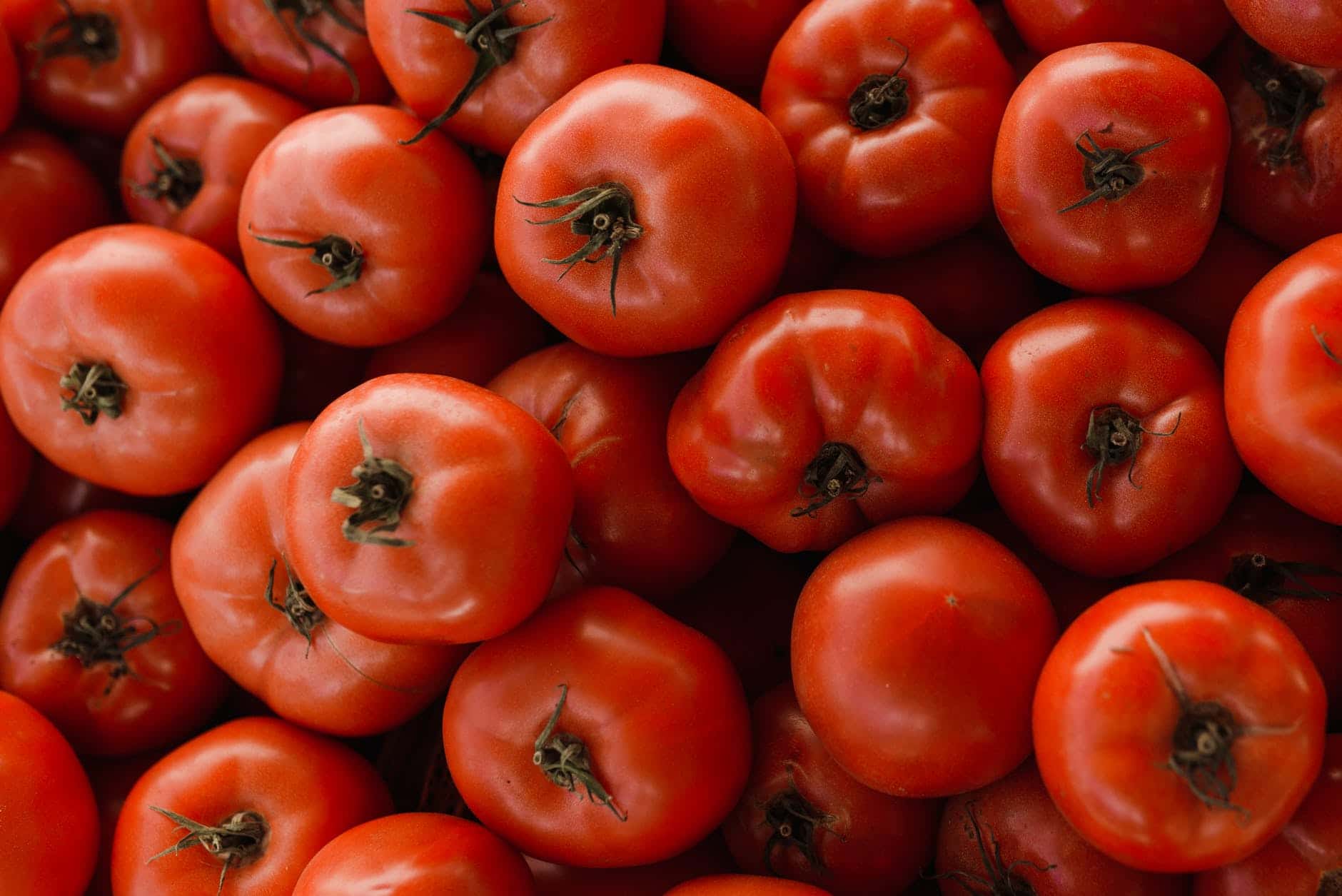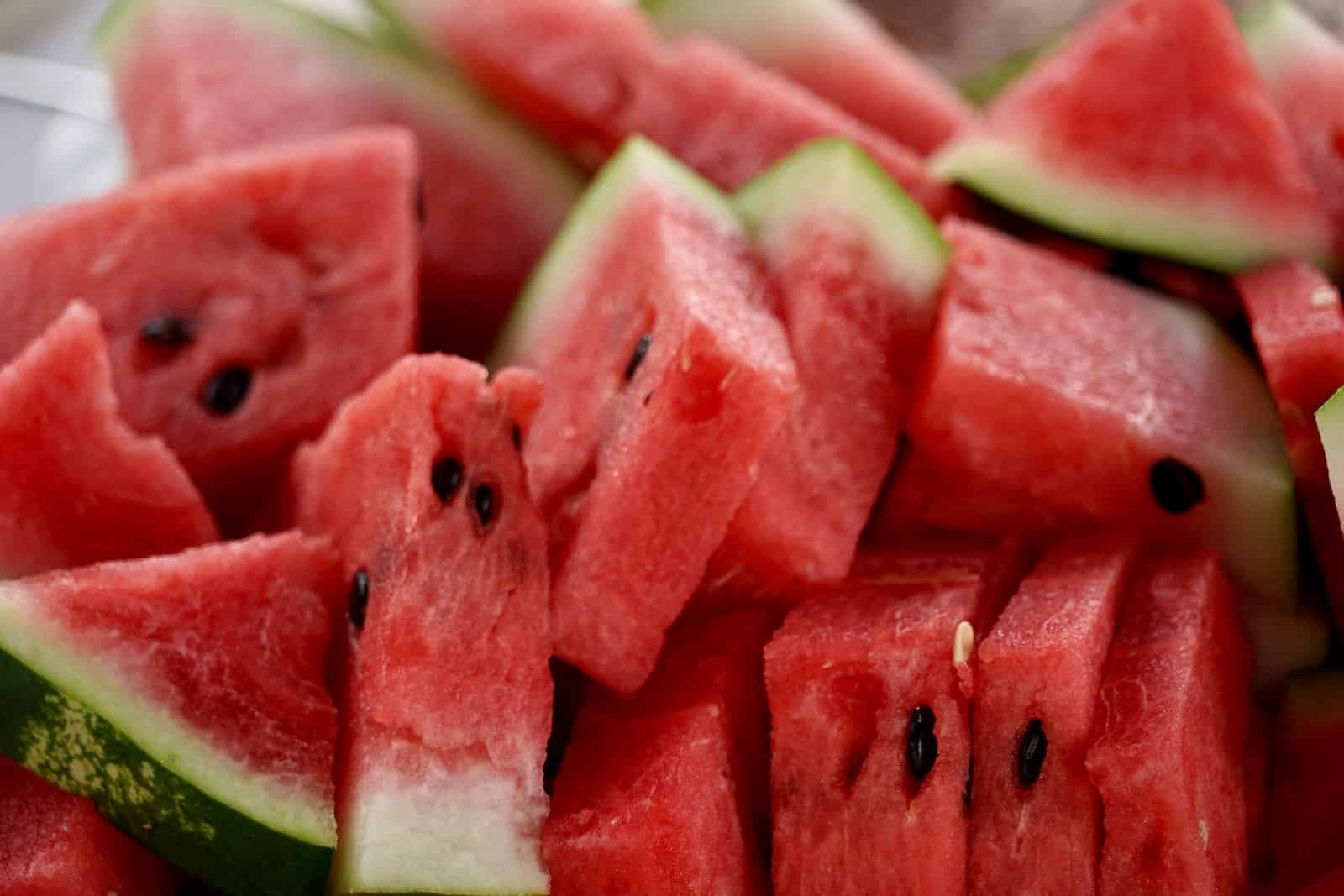According to the FAO, United Nations, the 15 most popular fruits in the world are probably known to and eaten by everyone.
Fruit is famous worldwide because it’s tasty, convenient to consume, and high in nutrients like fiber and vitamins.
Fruit, mainly water, is excellent for quenching thirst and satisfying appetite.
Additionally, they can be consumed in various ways, including smoothies, sorbets, and even ice cream.
They can also be used in cooking and baking and for dish decoration.
Furthermore, fruit’s sole drawback is that it is a rapid source of energy that is also low in protein, making it a convenient snack to tide you over until your next meal.
The most popular fruits in the world are listed below;
1. Tomato

Contrary to popular belief, the tomato is technically a fruit because it includes seeds.
They are grown in greater quantities than any other fruit, with over 170 million tons produced worldwide yearly.
China, India, Turkey, and the United States have the majority of tomato harvests.
However, it’s no surprise that tomatoes are the world’s most popular fruit, mainly because they’re a staple in millions of people’s diets.
This versatile fruit is used in sauces, soups, salads, condiments, garnishes, and even drinks and is a critical ingredient in various cuisines.
It’s also used as a fast food component, with ketchup, salsa, and pico de gallo made using it.
Additionally, Tomatoes are low in calories and high in vitamins C and K, potassium, folate, and an antioxidant called lycopene.
According to studies, lycopene may reduce the risk of heart disease and certain types of cancer.
Meanwhile, tomatoes also contain other antioxidants, such as beta carotene, naringenin, and chlorogenic acid, and are a good source of fiber.
Fiber aids in the prevention of constipation, the reduction of cholesterol, the control of blood sugar levels, and the maintenance of a healthy weight.
2. Bananas

Bananas are also one of the most popular fruits in the world. Almost 150 million bananas are produced (predominantly in India and China).
The Philippines, Ecuador, Indonesia, and Brazil are also significant producers, with the Philippines, Ecuador, Indonesia, and Brazil exporting most of their banana crops to other nations for consumption.
Additionally, bananas, first and foremost, are abundant in potassium, which may help avoid strokes, high blood pressure, and heart disease.
It also helps with cramping and muscle exhaustion after a strenuous workout.
Bananas are ideal for on-the-go snacking because they come with their protective case and are easy to peel without cleaning.
Furthermore, they assist in digesting proteins, lipids, and carbs by providing a fifth of the daily B6 vitamin needed.
They’re also high in vitamin C (10%) for immunity, fiber (2.6 grams) for digestion, and magnesium (9%) for the brain.
Bananas, especially when combined with Greek yogurt or cottage cheese, assist the body in producing melatonin, which aids in sound sleep.
3. Apples

Apples are grown mainly in China, the United States, Europe, and Turkey and are among the most popular fruits in the world.
Every year, around 76 million tons are manufactured around the world.
Apples are a great source of vitamins A, B1, B2, B6, C, E, and K, as well as potassium, manganese, copper, and potassium, manganese, and copper.
They boost feelings of fullness and lower calorie intake due to dietary fiber.
Additionally, Apple flavonoids such as quercetin, kaempferol, and catechin have antioxidant characteristics that can help protect against chronic illnesses like cancer, heart disease, and diabetes.
They also help decrease cholesterol, strengthen bones, and boost cognitive function.
Finally, apple pectin acts as a prebiotic, balancing gut bacteria, regulating blood sugar levels, and improving cardiovascular health.
4. Watermelons

Watermelons are grown in most countries, including South Africa, Japan, China, Turkey, India, Brazil, and other parts of the world.
Nothing beats an excellent slice of ripe watermelon on a sweltering summer afternoon.
Watermelons are thought to have originated in Egypt. According to ancient hieroglyphs discovered there, watermelons were a valued fruit even in Pharaohs’ graves on their final voyage to the afterlife.
Additionally, China now leads the world in watermelon production, with roughly 73 million tonnes produced yearly.
Because of their natural sweetness and high water content, watermelons are frequently utilized in alcoholic and non-alcoholic cocktails. Watermelons are also one of the most popular fruits in the world.
5. Oranges

About 73 million oranges are produced in Brazil, China, India, and other countries. These bright, tiny citrus fruits are abundant in vitamin B1, folic acid, and potassium.
Additionally, most orange crops manufacture orange juice, one of the most popular fruit drinks ever.
A single serving of orange juice contains 67 percent of the daily vitamin C requirement.
Furthermore, vitamin C boosts collagen formation, aids iron absorption, and strengthens bones and teeth, making it especially important for pregnant women and children.
Believe it or not, one giant orange can provide up to 20% of your daily fiber intake.
Meanwhile, it’s also high in antioxidants such as phenolics, carotenoids, and citric acid.
6. Mangoes

Mangoes are also one of the most popular fruits in the world. India, China, and Thailand are the world’s top mango producers, with over 50 million tons of exotic tropical fruit produced yearly.
Mangoes contain a lot of beta carotene, an antioxidant that the human body converts to vitamin A.
Vitamin A is essential for good vision, skin, teeth, and a healthy immune system.
Additionally, mangoes are also high in copper, folate, niacin, potassium, riboflavin, manganese, thiamine, magnesium, dietary fiber, copper, folate niacin, potassium, riboflavin, manganese, thiamine, and magnesium.
Mangiferin, an antioxidant found in mangoes, is being researched for its potential anti-diabetic and anti-cancer qualities.
7. Pears

Pears are unique because they are native to many parts of the world, including much of Europe, Asia, and northern Africa.
These fruits have been around for a long time, consumed in prehistoric times, and farmed in China for 3,000 years.
China remains the world’s largest producer of pears, with about 16 million metric tons produced each year.
Additionally, while underappreciated in the West, pears are just as famous as apples in Eastern European countries.
They are a delicious and inexpensive delight at street markets and supermarket shelves.
In addition, it may be found in most gardens and even on the streets and is frequently collected by locals on their way to work.
8. Avocadoes

Avocadoes are also one of the most popular fruits in the world. Avocados are a native fruit that originated in South-Central Mexico between 8000 and 5000 BCE and were domesticated by the indigenous 5,000 years ago.
In addition, at the end of the 15th century, the Aztecs told Columbus and his friends about the fruit.
With 2.2 million metric tons, Mexico remains the leading avocado producer.
Additionally, avocadoes are a unique source of fatty acids in fruits, providing approximately half of the required daily intake of healthy fats while still being a rich source of fiber.
Glossy hair and good skincare due to these fats and other vitamins and minerals.
9. Grapes
China, the United Nations, Italy, France, and Spain are some of the top nations growing grapes. Grapes are a low-fat, low-calorie sweet delight.
Furthermore, a grape is a berry-like fruit found on the deciduous woody vines of the Vitis genus of flowering plants.
Grapes can be consumed fresh as table grapes or dried as raisins, currants, and sultanas.
They can also make wine, jam, grape juice, jelly, grape seed extract, vinegar, and grape seed oil. Grapes are a sort of non-climacteric fruit that grows in bunches.
Additionally, grapes might be a decent snack option for cookies and sweets if you’re trying to cut down on processed foods or added sugars.
Additionally, the vitamins in grapes are responsible for most of their health advantages.
10. Pineapple
The Pineapple (Ananas comosus) is the most economically significant plant in the Bromeliaceae family.
It is also one of the most popular fruits in the world. It is a tropical plant with edible fruit.
The pineapple is native to South America and has been growing for hundreds of years.
Furthermore, the pineapple became a prominent cultural luxury image introduced in Europe in the 17th century.
Additionally, like most fruits, Pineapple gets most of its calories from carbohydrates. Therefore, pineapple isn’t a very high-protein food.
It has a calorie content of less than 1 gram per serving. Pineapple is a fruit with a moderate glycemic index (GI).
It has a lower glycemic index than overripe bananas and watermelon but higher than low-GI fruits like berries, apples, and pears.
Pineapples are highly low in fat, with only half a gram per one-cup serving. They are also high in vitamin C and a good source of it.
A full day’s caffeine can be found in only one cup. A serving of Pineapple also contains 181 micrograms of copper.
Pineapple is an excellent source of copper, with an adequate intake (AI) of 900 micrograms per day.
Lastly, Pineapple has various short- and long-term health advantages like other fruits.
Pineapple’s vitamins, minerals, and antioxidants are primarily responsible for these benefits.
11. Peach
The peach (Prunus persica) is a deciduous tree native to Northwest China.
It was first domesticated and grown between the Tarim Basin and the north slopes of the Kunlun Mountains.
However, it produces edible, juicy fruits with various qualities, most of which are referred to as peaches and others as nectarines (the glossy-skinned, non-fuzzy types).
Peach is mainly grown in China, Spain, Greece, Italy, and more. Furthermore, Peaches don’t have a lot of vitamins or minerals in them.
On the other hand, a cup of diced peach contains 11.1 milligrams (mg) of vitamin C and contributes to the recommended daily allowance (RDA) of potassium, fiber, and iron.
According to US Department of Agriculture recommendations, this amount of vitamin C corresponds to 12.33 percent of the RDA for an adult man and 14.80 percent for an adult female (USDA).
Despite their poor nutrient profile, Peaches can benefit people’s health when consumed as part of a well-balanced diet that includes a variety of fruits and vegetables.
Peaches can be used to replace more dangerous added sugars in sweets and pastries. Furthermore, peaches have a high level of vitamin C.
This vitamin is a potent antioxidant that can help prevent the creation of free radicals.
Free radicals have been linked to the development of cancer and healthy skin, among other benefits.
12. Pumpkin
Pumpkin is the 12th most popular fruit in the world. A pumpkin is a winter squash cultivar that is round with smooth, slightly ribbed skin and is often deep yellow to orange in color.
They are primarily grown in China, Russia, Ukraine, Mexico, and Spain. The seeds and pulp are contained in the thick shell.
Additionally, Pumpkin is high in vitamins and minerals but low in calories because it’s 94 percent water.
Beta-carotene, a carotenoid that your body converts to vitamin A, is abundant.
Furthermore, Pumpkin seeds are edible, nutritious, and have various health advantages.
Additionally, Pumpkin includes antioxidants such as alpha-carotene, beta-carotene, beta-cryptoxanthin, and others that may help protect your cells from free radical damage.
Pumpkin is high in vitamins A and C, which might help your immune system function better.
Its vitamin E, iron, and folate content may help to boost your immunity.
Pumpkin is high in potassium, vitamin C, fiber, and antioxidants, all of which are associated with improved heart health.
13. Dates
Dates are among the sweetest fruits on the planet, so it is no surprise that they are also among the most popular fruits in the world.
You might wonder if dates are a healthy snack because of their high sugar content.
Dates are primarily grown in Egypt, Iran, Iraq, and Saudi Arabia, among other countries.
Additionally, dates are naturally delicious, but they include essential minerals and fiber as a fruit.
Dates should be consumed in moderation, although they are far from calorie-free.
Furthermore, A single 8-gram date contains 23 calories, 0.2 grams of protein, 6 grams of carbohydrates, and 0 grams of fat.
Potassium, magnesium, and iron are all abundant in dates. Furthermore, a date has 6 grams of carbs, most of which are sugar.
Dates are also delicious because they contain a lot of fructose, which is twice as sweet as glucose. An average date has little over half a gram of fiber.
As the fruit ripens, sugar content increases while fiber levels decrease. Dates have a glycemic index of 43 to 55, depending on the type and stage of ripeness.
Despite their deliciousness, they are surprisingly low in glycemic index. Dates don’t have a lot of fat in them.
Dates have anti-inflammatory and antioxidant qualities that have been linked to cancer prevention.
A lack of magnesium has been linked to an increased risk of osteoporosis. Dates contain only a small quantity of protein.
To achieve your daily protein needs, include lean meats, fish, nuts, seeds, and legumes.
14. Papaya

The papaya tree is a small, sparsely branching tree with spirally arranged leaves limited to the top of the trunk. Its stem usually grows from 5 to 10 m (16 to 33 ft) tall.
Additionally, papayas thrive in tropical areas and are often called papaws or pawpaws.
Papaya is grown chiefly in India, Mexico, Brazil, Indonesia, and the Dominican Republic.
They are among the most popular fruits globally because of their sweet taste, brilliant color, and wide range of health advantages.
Additionally, People who consume a lot of particular nutrients have a lower risk of having asthma.
Beta-carotene, found in foods such as papaya, apricots, broccoli, cantaloupe, pumpkin, and carrots, is one of these nutrients.
People with type 1 diabetes who eat a high-fiber diet have lower blood glucose levels.
In contrast, people with type 2 diabetes may have better blood sugar, lipid, and insulin levels, according to studies.
A small papaya contains about 3 grams of fiber and roughly 17 grams of carbohydrates—Papaya’s high fiber, potassium, and vitamin levels all aid in preventing heart disease.
The essential dietary modification a person can make to reduce salt intake is to increase potassium intake while decreasing sodium intake.
15. Strawberry

In the 18th century, the strawberry (Fragaria ananassa) was introduced to Europe.
It’s a cross between two North American and Chilean wild strawberry varieties. Strawberries are bright red fruit that is sweet and juicy.
They’re high in vitamin C, manganese, folate (vitamin B9), and potassium.
Strawberries are high in antioxidants and plant compounds to help manage heart health and blood sugar.
These berries are typically eaten raw and fresh, but they can also be used in jams, jellies, and desserts.
In addition, strawberries contain vitamin C, manganese, folate (vitamin B9), and potassium.
Strawberries also contain trace levels of a variety of vitamins and minerals. They may help control blood sugar and reduce the risk of heart disease and cancer.
Strawberries are a good diet choice. However, strawberry allergies are relatively prevalent, particularly in children.
Lastly, Strawberry consumption may cause allergic people to birch pollen or apples.
In conclusion, the tomato is the most popular fruit globally, even though many consider it a vegetable!
The most popular fruits worldwide are a healthy alternative to desserts and other sugary sweets, regardless of your preferences.
They provide many necessary vitamins and minerals to keep you active, healthy, and content.













